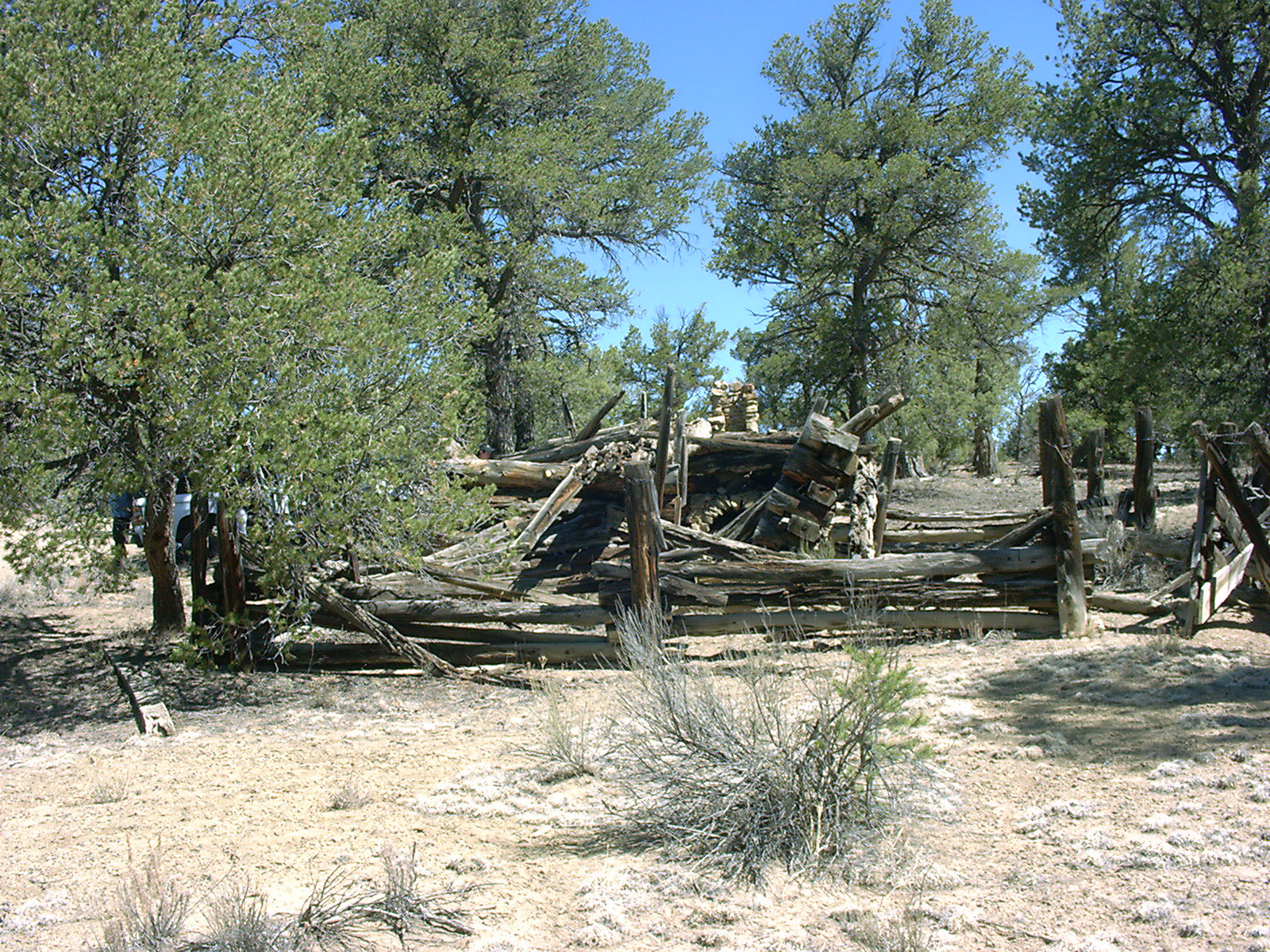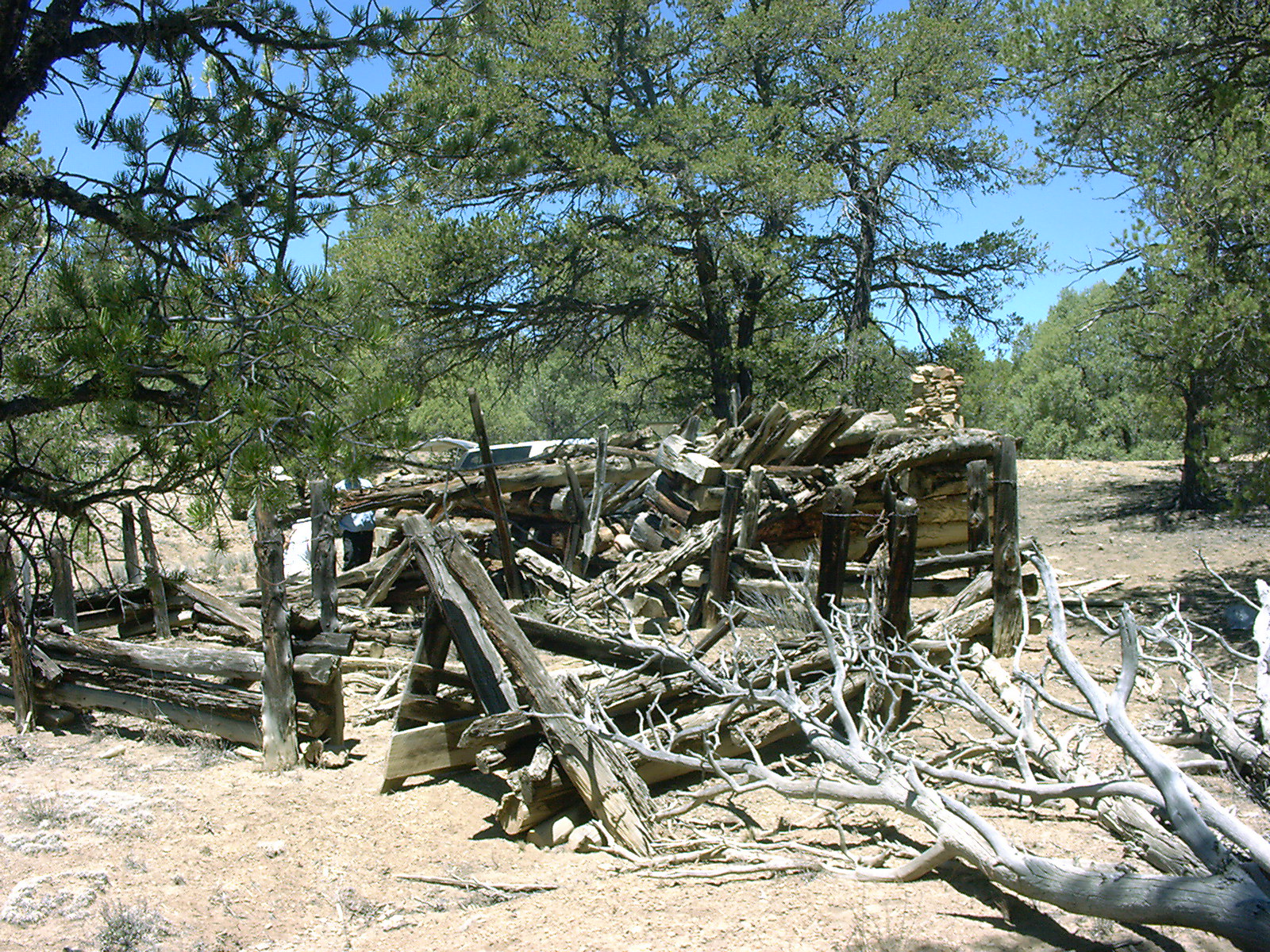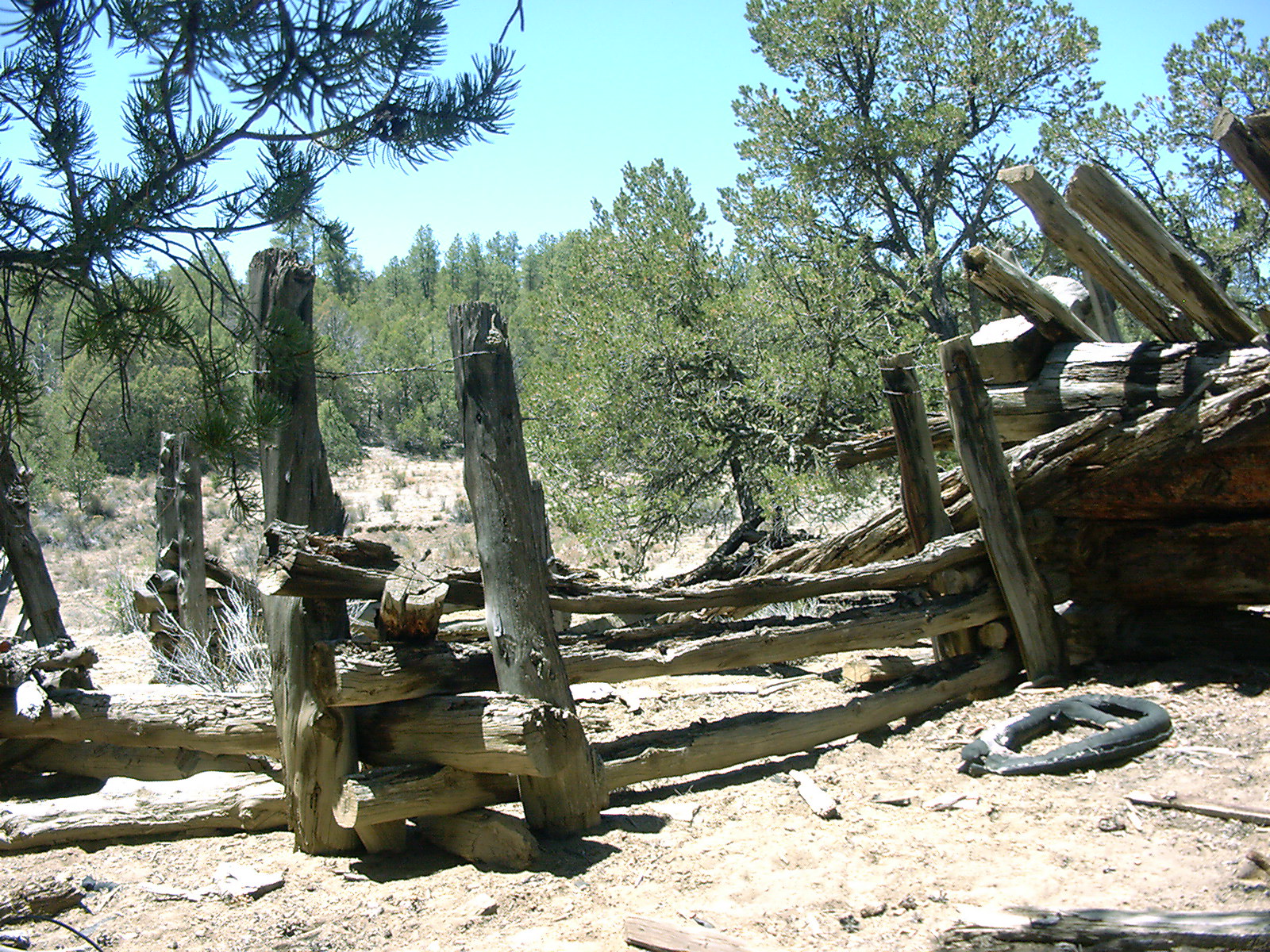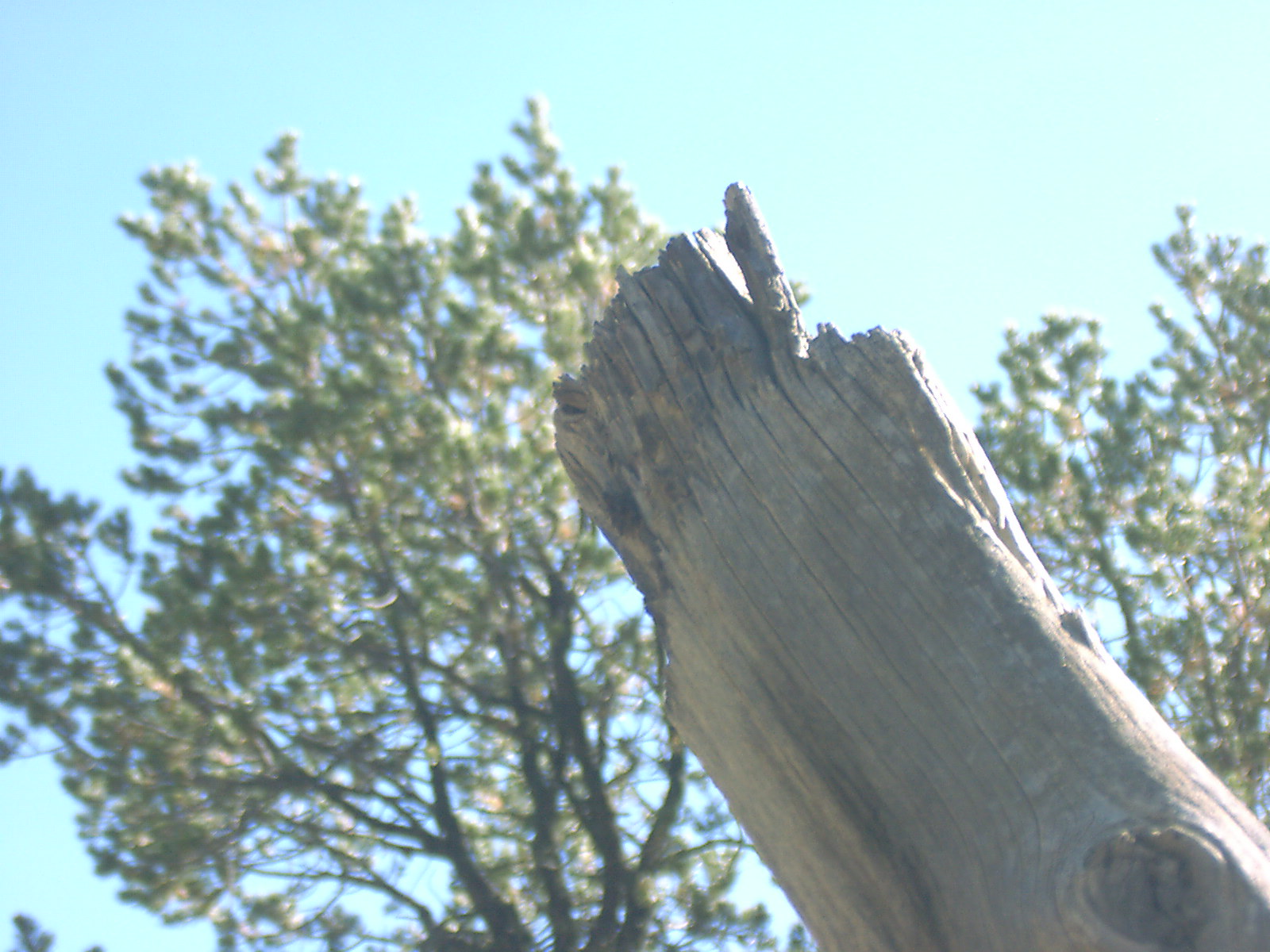



Cebolla Homestead Yard
 |
|
 |
 |
 |
The yard consists of five different wall segments and two gate openings (Figure …..). More or less rectangular, the yard articulates with the south end of the cabin on both the east and west sides. Paired vertical support posts hold the horizontal wall beams (intramurals) in place and were placed next to the cabin walls, at junction points, and near the ends of the intramurals; the horizontal elements were not fastened to the uprights, but simply placed between the two paired uprights. The uprights were secured by wire looped over both elements a short distance from the top. The wall segments were originally 4-5 logs high—probably 4’+, but have collapsed over time. There are no internal structures in the yard and we infer that the space was used as temporary storage space for vehicles or animals.
The 25 samples collected from the yard include 12 junipers (all J. scopulorum), 12 ponderosas, and one pinyon. The species use is significant in that all of the vertical support posts are Juniperus scopulorum. That species was probably selected because it is more resistant to decay when buried than other species; it is interesting, however, that several of these uprights exhibit “circular rot” (Figure ….) on their top ends, as if they had been buried for a period and then reversed for additional use; this erosion may have been caused by wires used to hold the uprights in position.. The horizontal intramurals, on the other hand, include nine ponderosas and a single pinyon. Ponderosas were probably selected because there are typically long and straight. The wall supports are small pieces used to prop up the horizontal intramurals (Figure …), and consist of three ponderosas and two junipers; they are probably simply extra pieces, but none duplicate any other sampled elements.
Eighteen of the yard samples yielded dates (Table 4), including 12 cutting dates. All of the samples that yielded cutting dates exhibit incomplete terminal rings, indicating beam procurement during the summers of both 1935 (CEB-175, CEB-178, CEB-181, CEB-183) and 1936 (CEB-167, CEB-168, CEB-169, CEB-170, CEB-176, CEB-177, CEB-180, CEB-182). The distribution of cutting date clusters in two years, all with incomplete terminal rings, provides evidence for two interpretations. First, the yard may have been constructed over two successive summers using freshly cut beams each year. Alternatively, the yard may have been built in summer 1936 using freshly cut beams and timbers stockpiled during the previous year. For reasons outlined below, we favor the second interpretation of construction during the summer on 1936.